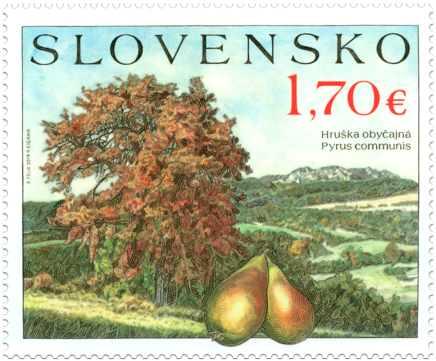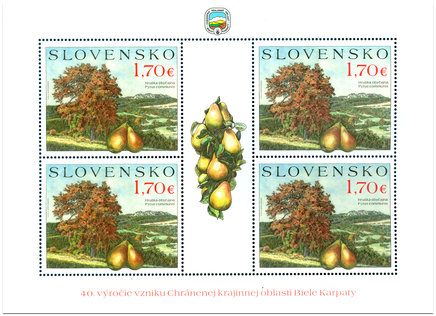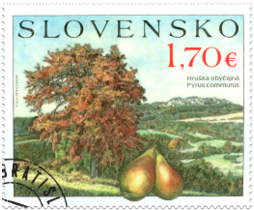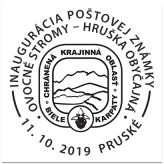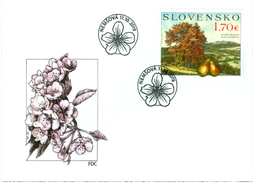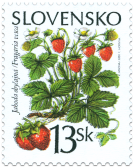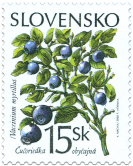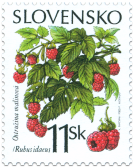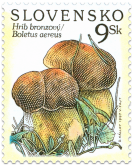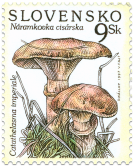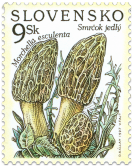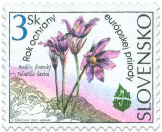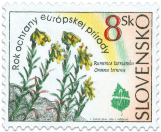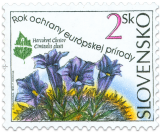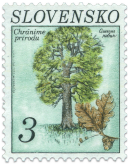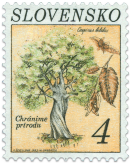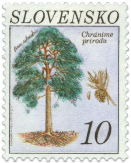697 Date of issue
11.10.2019 Face value
1.70 € Sell price
1.70 €
The Protected Landscape Area of the White Carpathians, that form a border between Moravia and Slovakia, was defined in 1979. Owing to the long-term harmonious co-existence of man and nature, the local landscape is formed by a diverse mosaic of meadows, pastures, settlements, forests, fields, unploughed lands, orchards and wetlands. The preservation of the myriad of natural treasures, such as the diverse orchid meadows with hundreds of species of plants and thousands of species of insects, relies on the presence of people – farmers.
The theme we have chosen for the postage stamp that commemorates the 40th anniversary of the foundation of the Protected Landscape Area is the common pear, standing alone in the wonderful White Carpathian landscape below Vršatec. The stamp shows a robust wild tree and the Comice variety of pear.
It is a well-known fruit tree, cultivated for time immemorial in hundreds of varieties and cultivars. These majestic pear trees have been an integral part of the landscape of the White Carpathian for centuries and deserve our attention, protection and care. It is possible to find more than a hundred different varieties of the pear, with many different uses. Several of them are local, regional cultivars. The extensive mowed orchards with high trunk trees represent extraordinarily varied habitats where protected species of plants and animals frequently reside. The solitary standing fruit trees, usually wild, are often home to several species of birds and insects with rare types of lichens growing on their bark, even long after they have naturally died off. It was these robust seedlings of the wild growing pear and apple trees, on which previous generations grafted their fruit varieties. However, this natural and cultural legacy is gradually disappearing from the landscape. The diversity of the fruits grown today is becoming smaller, with some of the varieties only surviving on the last few old trees. The conservation of these regional varieties and their diversity is one of the long-term objectives of the Protected Landscape Area.
Sylva Mertanová
Similar products
216 Date of issue
14.09.2000
217 Date of issue
14.09.2000
215 Date of issue
14.09.2000
128 Date of issue
17.09.1997
130 Date of issue
17.09.1997
129 Date of issue
17.09.1997
57 Date of issue
28.02.1995
58 Date of issue
28.02.1995
56 Date of issue
28.02.1995
7 Date of issue
14.05.1993
8 Date of issue
14.05.1993
9 Date of issue
14.05.1993
© 2024 POFIS - Postal philatelic service. All rights reserved

